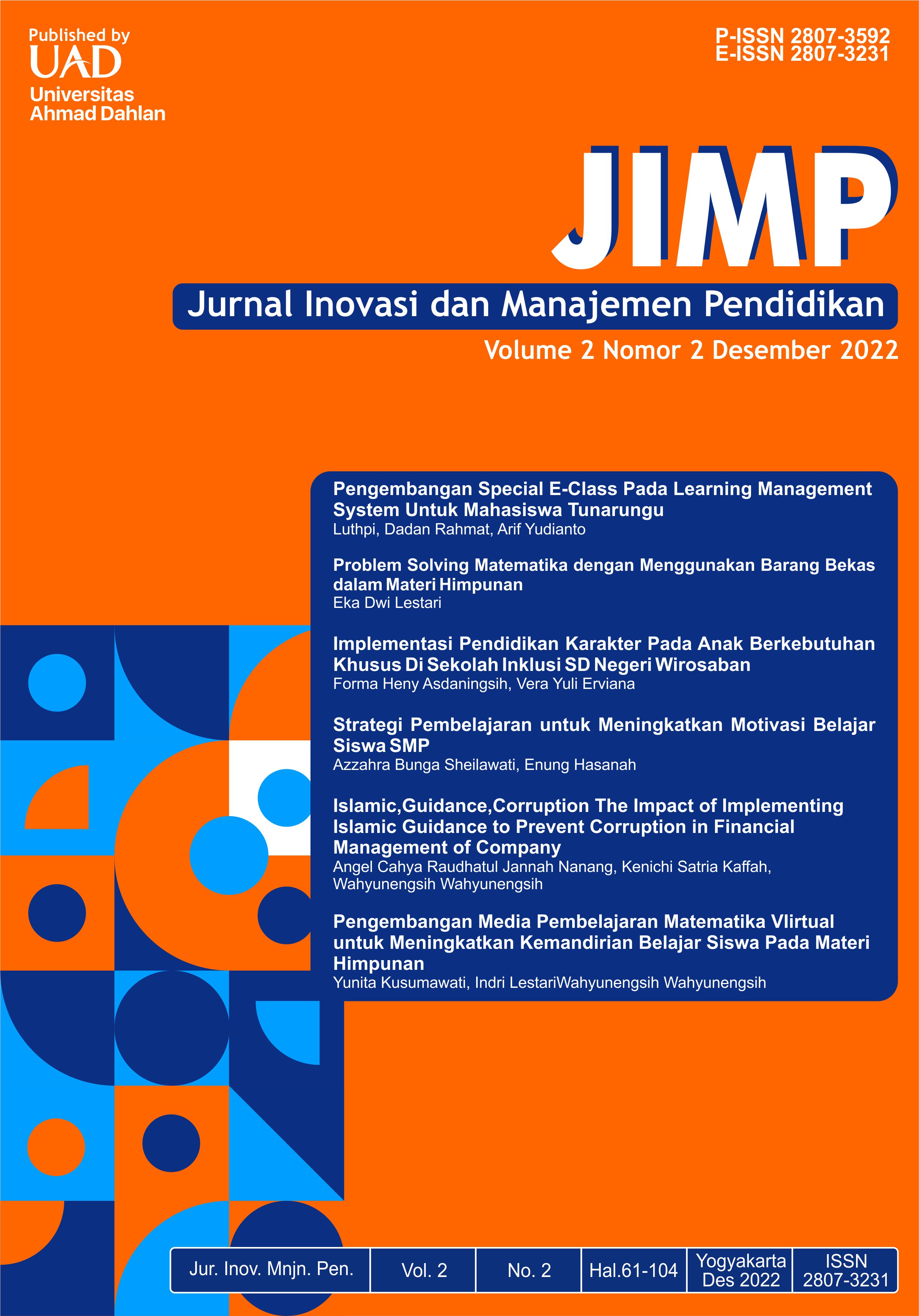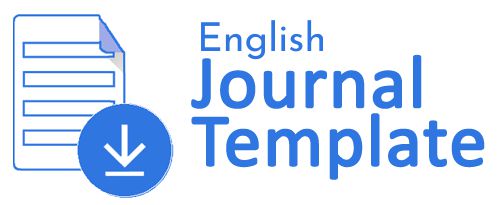Problem Solving Matematika dengan Menggunakan Barang Bekas dalam Materi Himpunan
DOI:
https://doi.org/10.12928/jimp.v2i2.4618Keywords:
Komunikasi matematis, Preloved, himpunan.Abstract
Pada saat ini, sudah terlihat peningkatan kemampuan komunikasi yang menekankan kemampuan siswa dalam menyampaikan ide matematika baik secara lisan maupun tulisan, kemampuan komunikasi matematis ini peserta didik dapat dikembangkan melalui proses pembelajaran di sekolah, salah satunya adalah proses pembelajaran matematika. Dengan berbasis preloved atau barang bekas ini, hal inilah penulis yang mendasari penulis menggunakan bahan preloved pada materi himpunan disekolah SMP Ar-rahmaniyah, sehingga siswa mendapatkan pengalaman karena sudah membuat atau melakukan dengan media pembelajaran, maka terlihat hasil pembelajaran siswa menunjukkan adanya peningkatan kemampuan komunikasi sistematis ini dengan menggunakan media tutup botol terlihat hasil dari kuisioner.
References
Fatimah, F. (2012). Kemampuan komunikasi matematis dan pemecahan masalah melalui problem based-learning. Jurnal Penelitian dan Evaluasi Pendidikan, 16(1), 249-259.
https://modelpembelajaran1.wordpress.com/2016/02/21/model-pembelajaran-problem-solving/
Mu’awanah, S. (2015). Pengembangan Instrumen Penilaian Problem Solving pada Materi Larutan Elektrolit dan Nonelektrolit. In Seminar Nasional Pendidikan Sains V 2015. Sebelas Maret University.
Komariah, K. (2011). Penerapan metode pembelajaran problem solving model polya untuk meningkatkan kemampuan memecahkan masalah bagi siswa kelas IX J di SMPN 3 Cimahi. In Prosiding Seminar Nasional Penelitian, Pendidikan dan Penerapan MIPA, Fakultas MIPA, Universitas Negeri Yogyakarta (Vol. 14).
Purnomo, E. A., & Mawarsari, V. D. (2014). Peningkatan kemampuan pemecahan masalah melalui model pembelajaran ideal problem solving berbasis project based learning. Jurnal Karya Pendidikan Matematika, 1(1).
Syazali, M. (2015). Pengaruh Model Pembelajaran Creative Problem Solving Berbantuan Media Maple 11 Terhadap Kemampuan Pemecahan Masalah Matematis. Al-Jabar: Jurnal Pendidikan Matematika, 6(1), 91-98.
https://docs.google.com/forms/d/1rdjFbcKqjH2-qP7mrhvS2c1lVrilU1XtWoni4yi8koI/edit
Downloads
Published
How to Cite
Issue
Section
License
Copyright (c) 2022 Universitas Ahmad Dahlan

This work is licensed under a Creative Commons Attribution-ShareAlike 4.0 International License.
This article's copyright is transferred to Universitas Ahmad Dahlan (UAD) if and when the item is accepted for publication. The undersigned hereby transfers any rights in and to the paper including without limitation all copyrights to UAD. The undersigned hereby represents and warrants that the article is original and that he/she is the author of the paper, except for material identified as to its source, with permission notices from the copyright owners where required. The undersigned represents that he/she has the power and authority to make and execute this assignment.
We declare that:
This paper has not been published in the same form elsewhere.
It will not be submitted anywhere else for publication before acceptance/rejection by this Journal.
Copyright permission is obtained for materials published elsewhere and which require this permission for reproduction.
Furthermore, I/We hereby transfer the unlimited rights of publication of the above-mentioned paper in whole to UAD. The copyright transfer covers the exclusive right to reproduce and distribute the article, including reprints, translations, photographic reproductions, microform, electronic form (offline, online), or any other reproductions of similar nature.
The corresponding author signs for and accepts responsibility for releasing this material on behalf of any co-authors. This agreement is to be signed by at least one of the authors who have obtained the co-author(s) assent where applicable. After submission of this agreement signed by the corresponding author, changes of authorship or in the order of the authors listed will not be accepted.
Retained Rights/Terms and Conditions
Authors retain all proprietary rights in any process, procedure, or article of manufacture described in the Work.
Authors may reproduce or authorize others to reproduce the Work or derivative works for the author's personal use or company use, provided that the source and the UAD copyright notice are indicated, the copies are not used in any way that implies UAD endorsement of a product or service of any employer, and the documents themselves are not offered for sale.
Although authors are permitted to re-use all or portions of the Work in other works, this does not include granting third-party requests for reprinting, republishing, or different types of re-use.







